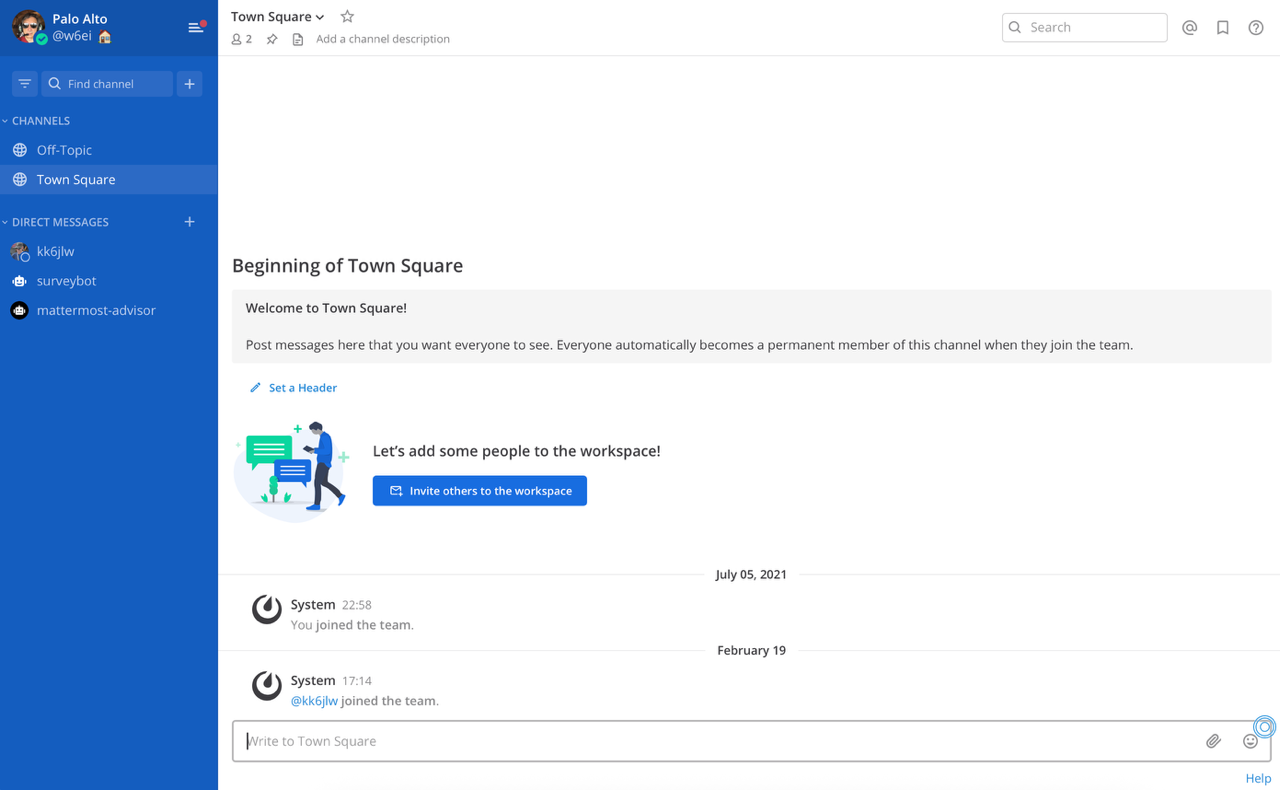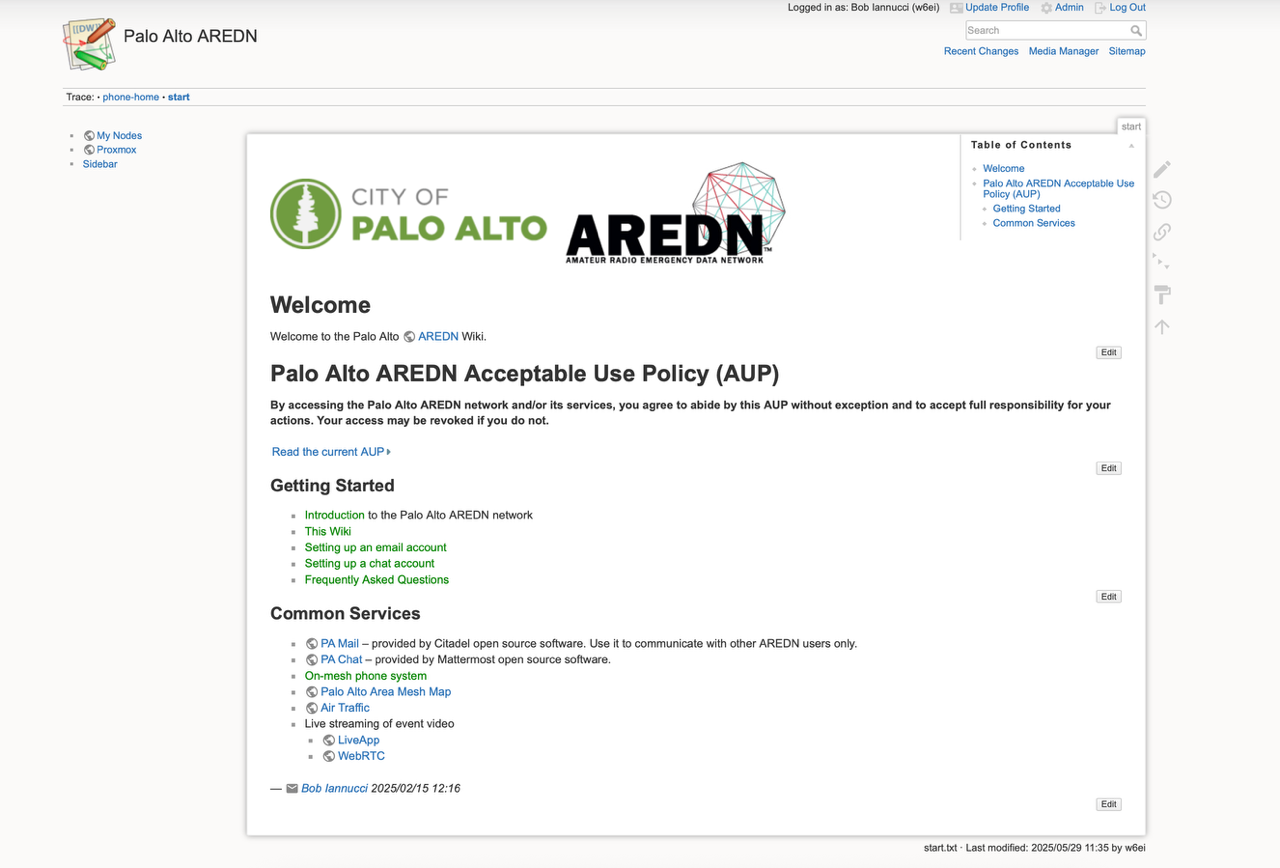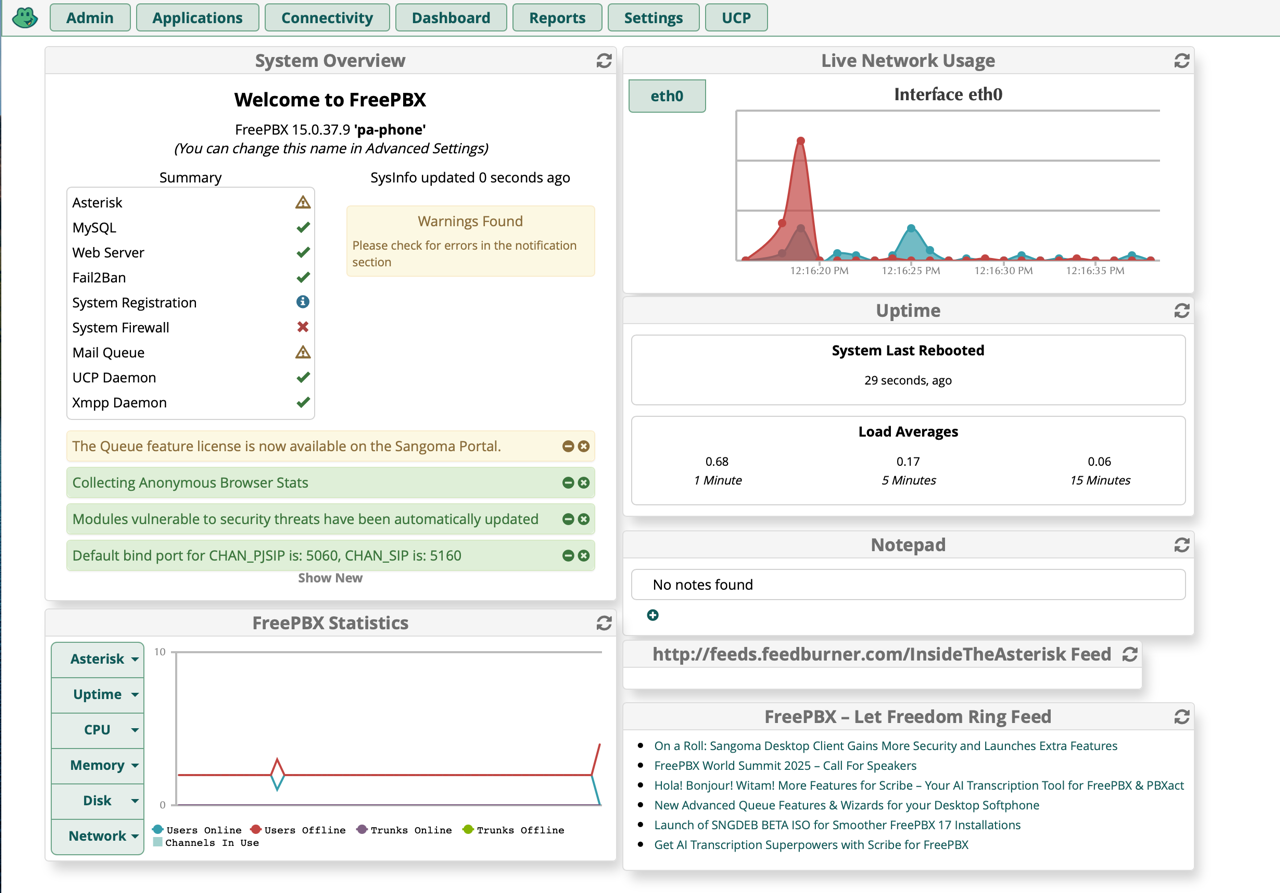Menu
The Palo Alto AREDN network provides network-based services for our users. These services run on a server computer within the City, on emergency power, and are connected directly to the Palo Alto AREDN network. All of these are open source software and have been proven out by other organizations worldwide.
To use these services, you will need to make a request by sending mail with your amateur radio callsign to W6EI. He will issue you login accounts for all of these services.
Important note: these services are only available when connected to the AREDN network. AREDN, by its design, uses a domain naming system that is based entirely within the AREDN network. AREDN addresses end in '.local.mesh' which is not a valid, public top-level domain. This is not a Palo-Alto-specific choice -- it is inherent in the design of AREDN to better isolate the AREDN network which we control from the resources of the broader internet which we can't guarantee in an emergency.
Email: Postfix and Dovecot
We've switched from Citadel, a server and webmail client that bundles in chatrooms and other services, to a more a la carte approach. For email, we now use Postfix and Dovecot servers with no web client. Our experience showed us that users have a strong preference for their own email client (e.g., Mac Mail, iOS Mail, Android mail) that is not well-served by adding a new and foreign-to-them web UI. Dovecot allows users to point their email application to pa-mail.local.mesh using IMAP and SMTP. At present, we support email to/from other servers on the AREDN network (email addresses will end in .local.mesh) and to internet email addresses. Replies and other email originating from the internet will be considered soon. When that happens, your external email address will likely be of the form <callsign>@aredn.paloalto.city. Stay tuned for updates.
Configuration
For a Mac, the instructions provided by this YouTube video are good. The important parameters you will need to know:
- Email account: <callsign>@pa-mail.local.mesh
- Password: provided to you when your account is set up
- Account Type: IMAP
- Incoming and outgoing mail servers: pa-mail.local.mesh
Some users have experienced an inability for their email client to log in via Dovecot. This unreliability is sometimes related to a DNS failure. If that happens when you are setting up IMAP, it is recommended that you either use the server's IP address (currently 10.0.224.88) when setting up your IMAP service or, if you are on a Mac or LInux laptop, adding an entry to /etc/hosts.
The server presents a self-signed certificate when your mail client attempts to log in. Because the server is not directly connected to the internet, the usual ways of creating a certificate that has a chain of trust to the root certificates is not possible. You should mark the mail server's certificate as "Always trusted" to avoid this problem.
Chat: Mattermost

- Reference website: Mattermost Team Edition
- Description: (from their website): Mattermost ensures adaptable, focused, resilient collaboration– keeping your teams connected when the mission is on the line.
- Commentary: (from the AREDN website): The Mattermost Team Edition is an open source platform that supports mobile and desktop messaging apps. It provides one-to-one and group messaging, file sharing, and message history with search capabilities. It is often described as an open source alternative to the commercial Slack communication tool.
Mattermost supports @mentions, and channels are available for organizing conversations which can be topic-based, group-based, or event-based. Notifications indicate user presence and activity. File sharing is provided for PDF and text files, as well as audio, video, and image files.
Ad-hoc web: DokuWiki

- Reference website: DokuWiki
- Description: (from their website): DokuWiki is a simple to use and highly versatile Open Source wiki software that doesn't require a database. It is loved by users for its clean and readable syntax. The ease of maintenance, backup and integration makes it an administrator's favorite. Built in access controls and authentication connectors make DokuWiki especially useful in the enterprise context and the large number of plugins contributed by its vibrant community allow for a broad range of use cases beyond a traditional wiki.
- Commentary: DokuWiki enables all members of the Palo Alto ESV community to create pages, edit them, upload images and other data, and immediately share this information with the rest of the team. In the above example, this is the "home page" for Palo Alto ESVs on the AREDN network, with links to mail (Citadel), chat (Mattermost) and other services.
You should bookmark pa-wiki.local.mesh so that when you are on the AREDN network, you can go directly to this landing page.
VoIP Telephony: FreePBX

- Reference website: FreePBX
- Description: (from their website): Freedom to Communicate -- The “Free” in FreePBX stands for Freedom. That’s because FreePBX, the world’s most popular open source IP PBX, gives users the tools to build a phone system tailored to their needs.
- Commentary: FreePBX supports voice communication over AREDN within the Palo Alto ESV community. Each user is issued a four-digit extension number. Users connected to the Palo Alto AREDN network can call one another via VoIP software that is built in to their smartphones (Android) or via an installable app (iPhone). Selected locations (e.g., the DOC) have their own physical phone that is dialable via this FreePBX system. Extension numbers are available on DokuWiki.
Why not just use internet services instead of running our own?
It is tempting to think of AREDN as a resilient internet service provider that will get us to the cloud in a disaster. It is not. There are several reasons why this is not the right way to think about AREDN:
- The internet, generally speaking, will not be accessible in a major disaster like an earthquake. The US Geological Survey conducted a major study called Haywired that examines the potential outcomes of a major rupture of the Hayward fault. You are encouraged to review Chapter S that deals with the anticipated impacts to telecommunications. A standout point is that the networks on which we rely today (internet and cellular in particular) have so many potential points of failure that it is unreasonable to assume connectivity will be unaffected in a major disaster. Cellular networks are particularly vulnerable to power outages because few cell sites are engineered with long-lasting backup power. As such, it is not wise to assume that traditional communications to cloud services will not be significantly impacted.
AREDN does not provide a good alternative way to communicate to the larger internet. AREDN's bandwidth and capabilities are focused on providing resilient local communication (within the City, with County, and with neighboring municipalities). While it will be possible to provide a satellite gateway such as Starlink from AREDN, its limited capacity will be overwhelmed in a disaster -- so much so that we can't count on it to reach cloud services. - AREDN operates under Part 97, and as discussed, can't be used with https:// sites (most of the internet sites are accessed via https://)
Taken together, these facts have led us (and other cities) to establish city-local servers and services on the AREDN network that can take the place of cloud services we would otherwise count upon.